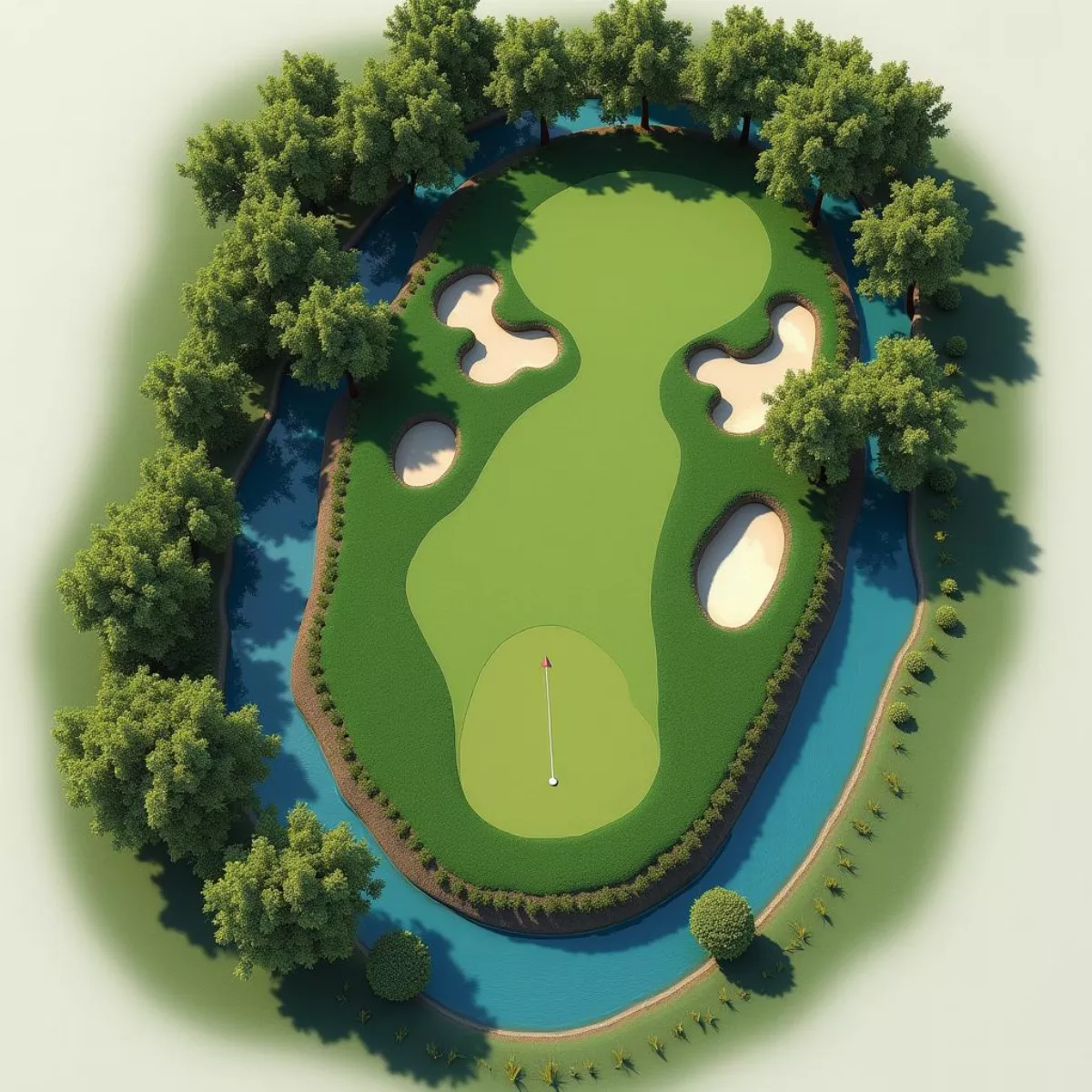Have you ever wondered, “How long is a golf course?” The answer might seem simple, but there’s much more to it than meets the eye. Whether you’re a seasoned golfer or just dipping your toes into the enchanting world of golf, understanding the length of a golf course—and what influences that length—can enhance your game and knowledge. In this guide, we’ll explore various aspects of golf course length, from standard measurements to factors affecting variations, all while aiming to make this informative and enjoyable!
What Is the Standard Length
Typically, golf courses are designed in a way that balances challenge and playability. A standard 18-hole golf course can vary in overall length, but here are some common ranges:
- Men’s Tees: 6,500 to 7,500 yards
- Women’s Tees: 5,500 to 6,500 yards
- Par 3 Courses: Ranges from 2,500 to 3,500 yards
To truly grasp these measurements, let’s break down each of the components that contribute to this average.
 Golf course aerial view
Golf course aerial view
Key Factors Influencing Length
- Course Type
- Public vs. Private: Private courses often have longer holes, designed for seasoned players.
- Links Courses: Typically found near coastlines, these courses can vary significantly due to natural landscapes.
- Skill Level
- Courses are built keeping in mind the skill levels of players, from beginners to professionals.
- More challenging courses may have longer distances between tees.
- Golf Format
- Different formats like match play or stroke play may serve as a guide for course architects to determine length.
- Topography
- A hilly or undulating course might shorten play due to elevation changes, while flat courses could allow for longer play.
- National Standards
- Organizations like the United States Golf Association (USGA) help standardize measurements, but there’s room for local variation.
- Length Adjustments
- Some courses adjust their lengths with seasonal changes such as temperature and wetness that could affect ground play.
Course Layout and Hole Design
A typical golf course consists of 18 holes, each designed with specific par values, generally ranging from 3 to 5.
- Par 3 Holes: Typically range from 100 to 250 yards.
- Par 4 Holes: Normally between 250 to 450 yards.
- Par 5 Holes: Usually around 450 to 600 yards.
 Golf course hole layout design
Golf course hole layout design
This layout directly affects the overall course length and the experience of the player, making each round unique.
Average Length Breakdown by Course Type
| Type of Course | Average Length |
|---|---|
| Traditional 18-hole | 6,500 to 7,500 yards |
| Executive Course (9 holes) | 1,500 to 3,000 yards |
| Par 3 Course | 2,000 to 3,500 yards |
| Championship Course | 7,000+ yards |
Adjustments for Different Play Styles
The length of a golf course isn’t just about the total yardage. Courses can be adjusted in scope for various playing styles:
- Shorter course setups for beginners to focus on fundamentals.
- Longer setups for tournaments that challenge professionals.
 Professional golf tournament tee off
Professional golf tournament tee off
Understanding Course Ratings and Slopes
What is Course Rating?
Course rating helps define the difficulty of a golf course compared to par. It’s calculated based on length, obstacles, and other factors that may come into play, helping determine the player’s expected score.
What is Slope Rating?
Slope rating measures difficulty for a bogey golfer compared to a scratch golfer. This gives players a better understanding of how challenging the course will be based on their skill level.
Importance of Ratings
These ratings are essential for competitive play and provide clarity, especially when venturing onto unfamiliar courses.
The Golf Experience Beyond Length
While the length of a golf course remains foundational, many players appreciate the experience tied to the entire setting:
- Aesthetic Layout: Nature plays a significant role in the design and feel of a golf course.
- Caddy Support: Knowledgeable caddies can adjust your game understanding based on course length and layout, easing the learning curve.
- Technology & Tools: Modern golf GPS devices can help determine the right club selection based on hole length and elevation.
 Golfers using GPS device on course
Golfers using GPS device on course
Key Takeaways
- Average lengths for golf courses vary based on skill, type, and layout.
- Factors like course design, par values, and national standards directly influence those lengths.
- Course ratings and slope ratings provide critical insights into difficulty relative to skill levels.
- The golf experience extends beyond just length—embracing the beauty, challenge, and camaraderie that the game embodies.
FAQ Section
1. What is the average length of a golf course?
The average length of a standard 18-hole golf course ranges from 6,500 to 7,500 yards.
2. How does course length affect gameplay?
Longer holes generally require greater skill levels and can increase the overall difficulty of a round.
3. What is the difference between par 3, par 4, and par 5 holes?
- Par 3 holes average between 100 to 250 yards.
- Par 4 holes generally range from 250 to 450 yards.
- Par 5 holes usually are from 450 to 600 yards.
4. Why are there different tee boxes on golf courses?
Different tee boxes cater to various skill levels, allowing golfers to choose the best distance based on their ability.
5. What is a slope rating in golf?
A slope rating measures the difficulty of a course for a bogey golfer compared to a scratch golfer.
6. Can the length of a course change during play?
While the overall length remains fixed, courses may adjust it via different tee placements or layouts for specific events.
7. Why do some courses have more holes?
Executive courses and par 3 courses often feature more holes but shorter lengths overall.
8. How does the weather affect golf courses?
Weather can change course conditions, influencing play speed and difficulty, although it rarely affects the actual length.
9. What tools can help determine my distance on the course?
Golf GPS devices and apps are excellent for measuring yardage and improving overall play.
10. Are there courses specifically designed for beginners?
Many courses cater to beginners, offering shorter overall lengths and more forgiving hole designs.
In conclusion, knowing the length of a golf course can significantly enrich your golfing experience. The combination of factors influencing its design, it’s crucial for players of all skill levels to understand these elements thoroughly. Whether for friendly play or tournament competitions, the course length plays an integral role in shaping the game, ensuring every round is exciting and engaging. Happy golfing!

